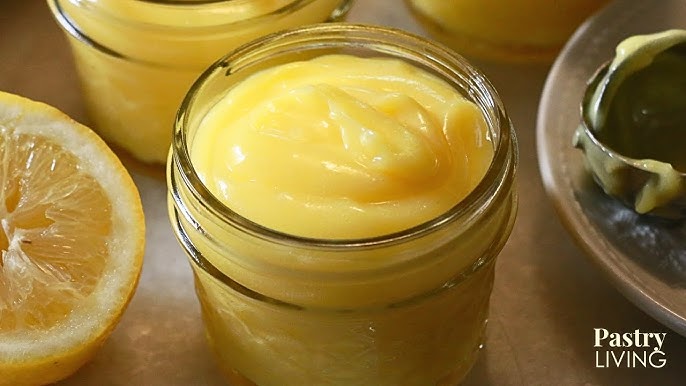Lemon Custard Recipe: There’s something truly special about a dessert that combines the creamy richness of custard with the refreshing zing of lemons. Lemon custard is one of those desserts that never goes out of style. Whether you’re preparing it for a family dinner, a festive celebration, or just as a treat for yourself, this dish always delivers.
In this guide, we’ll walk through everything you need to know—from the essential ingredients to a detailed step-by-step method—so you can master the art of making lemon custard at home.
Introduction to Lemon Custard
Why Lemon Custard is a Timeless Dessert
Lemon custard has been loved for generations, and it’s easy to see why. Unlike overly heavy desserts, it strikes the perfect balance between creamy texture and light, citrusy freshness. It feels indulgent without being overwhelming, making it suitable for all seasons. Think of it as sunshine in a spoon—the zest of lemons brings a vibrant brightness, while the custard base provides comfort and familiarity.
From grandmothers passing down secret recipes to modern chefs reimagining it in elegant plating, lemon custard has a rich history that keeps it relevant. It’s a dessert that works equally well for casual family meals or fancy dinner parties. Plus, its versatility allows you to enjoy it plain, layered in a tart shell, or served with whipped cream and berries.
The Perfect Balance of Sweet and Tangy
The magic of lemon custard lies in its flavor harmony. The custard base is smooth, sweet, and creamy thanks to the eggs, sugar, and milk or cream. On the other hand, the lemon juice and zest bring a lively tang that cuts through the richness. Too much sugar, and you lose the brightness; too much lemon, and it becomes sharp and overpowering. Achieving this balance is what turns a good custard into a perfect one.
Think of it like a duet in music—the sweet notes play softly in the background while the tangy citrus takes the lead without stealing the entire spotlight. When done right, lemon custard makes your taste buds dance.
Occasions Where Lemon Custard Shines
One of the best things about lemon custard is how adaptable it is. It’s not tied to a single occasion. Imagine serving it chilled in elegant cups at a summer garden party, or baked into a warm pie for a cozy winter evening. It can be the star dessert or a complementary side dish.
Here are a few occasions where lemon custard really shines:
- Dinner Parties: Served in small ramekins topped with whipped cream.
- Family Gatherings: As a pie or tart that everyone can share.
- Festive Holidays: A refreshing break from heavy, rich holiday desserts.
- Everyday Indulgence: A quick, homemade treat when you need something comforting.
Ingredients You’ll Need
Essential Ingredients for Lemon Custard
The beauty of lemon custard is its simplicity. You don’t need an endless list of ingredients; just a few quality ones make all the difference. Here’s what you’ll need:
- Eggs (4 large): Provide structure and richness.
- Milk or Cream (2 cups): For creaminess—whole milk for a lighter version, or heavy cream for indulgence.
- Sugar (¾ cup): Balances the tartness of the lemon.
- Fresh Lemon Juice (½ cup): The star of the dish, offering that sharp, zesty flavor.
- Lemon Zest (from 1–2 lemons): Adds fragrance and a burst of citrus oils.
- Cornstarch (2 tablespoons, optional): Helps stabilize the custard and prevent curdling.
- Vanilla Extract (1 teaspoon): Enhances depth of flavor.
- Salt (a pinch): Rounds out the sweetness.
These ingredients work together to create a silky-smooth custard that’s rich yet refreshing.
Substitutions and Variations
What if you don’t have every ingredient on hand? Don’t worry—you can make smart substitutions without ruining the custard.
- Milk Substitute: Almond milk, oat milk, or coconut milk work for a dairy-free option.
- Cream Substitute: Evaporated milk can replace heavy cream if you want a lighter version.
- Sugar Alternatives: Honey, maple syrup, or coconut sugar can be used, but they’ll slightly alter the flavor.
- Egg-Free Version: Use cornstarch, agar-agar, or a vegan custard powder for a plant-based custard.
- Flavored Variations: Add a hint of ginger, mint, or lavender to create a unique twist.
Fresh vs. Bottled Lemon Juice – Which Works Best?
This is one of the most common questions in lemon custard making. The answer? Fresh is always best. Freshly squeezed lemon juice not only gives a brighter, more vibrant flavor but also adds natural oils from the zest, which bottled juice simply can’t replicate.
Bottled lemon juice can sometimes taste flat or slightly bitter due to preservatives. If fresh lemons are available, always choose them. That said, if bottled juice is your only option, make sure it’s 100% pure juice with no added sweeteners or artificial flavors.
Kitchen Tools and Equipment
Must-Have Utensils for Custard Making
Making lemon custard doesn’t require fancy tools, but having the right equipment ensures smooth results. The basics include:
- Mixing bowls
- A sturdy whisk
- Saucepan (heavy-bottomed to prevent scorching)
- Measuring cups and spoons
- Fine mesh strainer (for removing lumps or egg bits)
- Heatproof spatula
- Ramekins or serving cups
Each tool plays an important role in making sure your custard turns out silky and lump-free.
Helpful Tools for Easier Cooking
While the essentials are enough, some extra tools can make the process smoother:
- Double Boiler: Helps cook the custard gently without risk of burning.
- Electric Mixer: Speeds up whisking.
- Zester/Grater: Extracts lemon zest without the bitter pith.
- Kitchen Thermometer: Ensures the custard doesn’t overheat (ideal temp: 170–175°F or 76–80°C).
Preparing Your Workspace Before Cooking
Before you begin, it’s worth setting up everything you need. Custard requires attention and quick action, so having ingredients measured, lemons zested, and tools ready prevents mistakes. Clear your countertop, place your utensils within reach, and keep a bowl of cold water nearby in case you need to cool down the custard quickly.
Think of it like setting the stage before a performance—everything should be in place so you can focus on the process.
Step-by-Step Guide to Making Lemon Custard
Step 1 – Preparing the Ingredients
Start by gathering everything you need: fresh lemons (for juice and zest), egg yolks, sugar, cornstarch (or flour), milk or cream, and a pinch of salt. Make sure your lemons are unwaxed so you can safely use the zest for extra flavor. Having everything ready before you begin makes the cooking process smooth.
Step 2 – Mixing the Base
In a saucepan, whisk together the egg yolks, sugar, cornstarch, and a pinch of salt until smooth. Slowly pour in the milk (or cream), whisking constantly to prevent lumps. This forms the creamy base of your custard.
Step 3 – Cooking the Custard Gently
Place the saucepan over medium-low heat and stir continuously with a wooden spoon or whisk. The mixture will gradually thicken—be patient and don’t let it boil, or the eggs may curdle. Once it coats the back of the spoon smoothly, you’ll know it’s ready.
Step 4 – Adding Lemon for the Perfect Flavor
Remove the pan from heat and stir in fresh lemon juice and finely grated lemon zest. The juice gives a bright tangy taste, while the zest adds a fragrant citrus kick. Mix well until fully incorporated.
Step 5 – Cooling and Serving
Pour the lemon custard into serving dishes or a large bowl. Cover with plastic wrap (pressed against the surface) to prevent a skin from forming. Chill in the refrigerator for at least 1–2 hours before serving. Garnish with a little whipped cream, extra zest, or fresh berries for a beautiful finish.
Common Mistakes and How to Avoid Them
Even though lemon custard is simple at its core, a few common mistakes can ruin the texture or flavor. Don’t worry—we’ll walk through them so you can avoid pitfalls and get it right every time.
Preventing Curdled Custard
Curdling happens when the eggs cook too quickly, turning your custard grainy or scrambled. To prevent this:
- Always use low heat.
- Stir constantly.
- Temper the eggs properly before adding hot milk.
- Remove from heat as soon as it thickens.
If your custard does curdle, try blending it with a hand blender to smooth it out. It won’t be perfect, but it can save the batch.
Achieving the Right Thickness
Runny custard usually means it wasn’t cooked long enough. On the flip side, an overly thick custard might have been overcooked or had too much starch. The spoon test (drawing a line on the back of a coated spoon) is a reliable way to check for doneness. If you prefer a firmer custard, refrigerate it longer or add a touch more cornstarch.
Balancing Sweetness and Tartness
Sometimes lemon custard can turn out either too sweet or too tangy. The solution is simple: adjust gradually. Taste as you add lemon juice, and balance with sugar if necessary. Remember, flavors intensify as the custard chills, so a slightly milder flavor when warm may taste perfect after refrigeration.
Variations of Lemon Custard
Lemon custard is already a crowd-pleaser on its own, but what makes it truly special is how versatile it can be. You can easily transform this simple recipe into different desserts depending on your mood, the occasion, or the ingredients you have at home. Let’s explore some popular variations.
Lemon Custard Pie
One of the most beloved ways to enjoy lemon custard is in a pie. All you need is a flaky pie crust—store-bought or homemade—and your lemon custard filling. Once the crust is baked and cooled, pour in the custard and let it set in the refrigerator. For extra flair, top it with meringue or whipped cream.
The combination of buttery crust, creamy custard, and bright lemon flavor makes this variation a classic. It’s perfect for family gatherings, potlucks, or holiday dinners when you want something light but still indulgent.
Baked Lemon Custard
For a slightly different texture, try baking your custard. Simply pour the custard mixture into ramekins, place them in a water bath, and bake at a low temperature until set. The result is a firmer, creamier dessert with a subtle caramelized flavor on top.
This version feels more elegant and restaurant-style, making it a great option for dinner parties. It pairs beautifully with shortbread cookies or fresh fruit on the side.
Vegan and Dairy-Free Lemon Custard
Good news for plant-based eaters—you can still enjoy lemon custard! Swap the milk or cream for coconut milk, almond milk, or oat milk. Replace the eggs with cornstarch, agar-agar, or custard powder. While the texture will be slightly different, the citrus flavor remains just as vibrant.
For an added twist, try infusing your dairy-free custard with coconut for a tropical touch. Garnish with toasted coconut flakes, and you have a completely vegan-friendly dessert that tastes just as indulgent.
Serving Suggestions
Lemon custard can shine in many forms, but presentation and pairings can elevate it even further. Whether you keep it simple or dress it up, the right serving style makes all the difference.
Best Toppings for Lemon Custard
- Whipped Cream: Adds lightness and contrast to the tangy flavor.
- Fresh Berries: Strawberries, raspberries, or blueberries bring natural sweetness and color.
- Mint Leaves: A touch of freshness that pairs beautifully with citrus.
- Powdered Sugar: A light dusting creates an elegant finish.
- Candied Lemon Peel: Enhances the citrus notes while adding texture.
Pairing with Cakes, Pastries, and Fruits
Lemon custard doesn’t have to be served solo. It works wonderfully as a complement to other desserts:
- As a filling in sponge cakes or cupcakes.
- Layered inside parfaits with crushed cookies and fruit.
- Poured over puff pastry or shortcake for an indulgent twist.
- Drizzled warm over baked apples or pears.
The custard’s creamy texture makes it versatile enough to enhance both light and rich desserts.
Creative Dessert Ideas with Custard
If you want to go beyond the traditional, here are a few creative ideas:
- Lemon Custard Trifle: Alternate layers of custard, sponge cake, fruit, and whipped cream.
- Lemon Custard Tartlets: Mini versions of the pie, perfect for individual servings.
- Frozen Lemon Custard Bars: Chill the custard, then freeze into bars for a refreshing summer treat.
- Lemon Custard Cheesecake: Combine custard with cream cheese for a decadent dessert.
Storage and Shelf Life
One of the benefits of lemon custard is that it can be made ahead of time, making it a convenient dessert for busy schedules. But like any dairy-based dish, it requires proper storage to maintain freshness.
How Long Does Lemon Custard Last?
Freshly made lemon custard typically lasts 3 to 4 days in the refrigerator if stored correctly. The flavor remains vibrant, and the texture stays smooth. After that, it may start to lose its creaminess or separate.
Refrigerating and Freezing Tips
- Refrigeration: Store custard in an airtight container or cover ramekins with plastic wrap pressed directly onto the surface to prevent a skin from forming.
- Freezing: While custard can technically be frozen, the texture may change once thawed, becoming watery or grainy. If you must freeze it, whisk it well after thawing to restore some creaminess.
Signs of Spoiled Custard
Always check for freshness before serving custard that’s been stored. Spoiled custard may show:
- A sour or off smell.
- Separation of liquid on top.
- A change in color or texture.
When in doubt, it’s best to discard it.
Health Benefits of Lemon Custard
While custard is often seen as an indulgence, it does have nutritional benefits—especially when made with wholesome ingredients.
Nutritional Value of Lemons
Lemons are rich in vitamin C, which boosts immunity and supports skin health. They also contain antioxidants and aid digestion. Adding zest and juice not only enhances flavor but also increases nutritional value.
Protein and Calcium from Eggs and Milk
Eggs provide high-quality protein and essential nutrients like vitamin D and B12. Milk and cream contribute calcium, which is important for bone health. Together, these ingredients make lemon custard more than just empty calories—it’s a dessert with nutritional perks.
Balancing Indulgence with Moderation
Of course, lemon custard still contains sugar and fat, so moderation is key. Enjoy it as an occasional treat, and balance it with lighter meals. For a healthier twist, reduce sugar slightly or use milk instead of cream. You’ll still get that rich, refreshing flavor without overindulging.
FAQs about Lemon Custard Recipe
1. Can I make lemon custard ahead of time?
Yes! Lemon custard can be made 2–3 days in advance. Just store it in the fridge with plastic wrap pressed onto the surface to prevent skin formation.
2. Can I use lime instead of lemon?
Absolutely. Lime custard has a slightly different tang but works just as well. You can even mix lemon and lime for a citrus blend.
3. How do I fix runny custard?
If your custard is runny, cook it a little longer on low heat until it thickens. Alternatively, stir in a slurry of cornstarch and water for extra thickness.
4. What’s the difference between lemon custard and lemon curd?
Lemon custard is creamier and made with milk or cream, while lemon curd is richer, thicker, and usually made with just eggs, sugar, butter, and lemon juice.
5. Can I bake lemon custard in the oven?
Yes! Baking custard in a water bath creates a firmer, restaurant-style dessert with a caramelized finish.
Conclusion
Lemon custard is proof that simple ingredients can create something extraordinary. With its smooth, creamy texture and bright citrus flavor, it offers the perfect balance of indulgence and freshness. Whether you serve it plain, baked into a pie, or paired with fruits and cakes, lemon custard is a dessert that always delights.
By following this step-by-step guide, avoiding common mistakes, and exploring variations, you can master the art of making lemon custard at home. From everyday treats to elegant dinner parties, this timeless dessert deserves a spot in your recipe collection.



